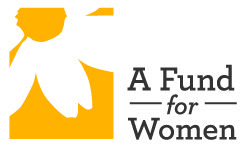Building a Stronger Community
Madison Community Foundation plays a vital role in local philanthropy, working to have a meaningful impact on our community. MCF uses its deep knowledge of the community, its opportunities and challenges, and the organizations working here to help create a more vibrant and equitable community.
Every year, MCF distributes more than $10 million throughout Dane County through three main channels: grants directed by our fundholders from their donor advised funds, money distributed to nonprofit organizations from their endowments and designated funds for their benefit, and grants directed by MCF’s Community Impact team from the Community Impact fund or one of the 69 Field of Interest funds MCF manages.

Helping Nonprofits Thrive
Among our community’s greatest assets are the nonprofits that strengthen and enhance the lives of the people they serve. When nonprofits thrive, everyone thrives. Over time, MCF has evolved how it approaches impact to involve several strategies:
- Grantmaking: Grantmaking remains at the heart of our work, supporting nonprofits throughout the Greater Madison area.
- Partnerships: MCF works with other area funders to create change and support things that are bigger than us.
- Convening: Through the Goodman Nonprofit Center, MCF is planning to bring together nonprofits and their leaders to develop skills and resources, and to work together toward common goals.
Explore Our Recent Grantmaking
MCF’s staff and Board of Governors direct grantmaking funds to organizations working in our community through two main channels: MCF’s Community Impact Fund and the Field of Interest funds it stewards.
Grants From the Community Impact Fund
MCF’s Community Impact grants are awarded through an annual competitive grant round. They are made to organizations in Dane County having an impact in five focus areas: Arts & Culture, Community Development, the Environment, Learning, and Nonprofit Capacity Building.

Field of Interest Funds Connect Values to High-Impact Opportunities
MCF stewards nearly 70 Field of Interest Funds, encompassing a variety of donor-directed focus areas. These funds allow donors to simplify their giving by supporting a specific area of interest. With a field of interest fund, donors determine the area their fund will support. MCF invests the money, and staff will distribute grants each year to organizations working in the areas the donors have determined. We monitor the changing needs of our community and ensure these grants continue to have the highest impact possible.
Field of Interest Grants
In addition to the field of interest funds established by community members, MCF has nine of its own field of interest funds, focused on:
- Women (AFFW)
- Arts and Culture
- Basic Needs/Social Services
- Children and Youth
- Community Development
- The Environment
- The Elderly
- Learning
- Nonprofit Capacity Building
Together, these funds distribute nearly $800,000 into the community each year.
A Fund for Women
 A Fund for Women (AFFW) brings people together to support the women and girls of our community in meeting their full potential. This advised field of interest fund’s mission is to transform Dane County so that all women and girls thrive. At the heart of its work are two basic activities: fundraising and grantmaking.
A Fund for Women (AFFW) brings people together to support the women and girls of our community in meeting their full potential. This advised field of interest fund’s mission is to transform Dane County so that all women and girls thrive. At the heart of its work are two basic activities: fundraising and grantmaking.
Since 1993, when a visionary group of original donors raised $100,000 to start an endowment fund, A Fund for Women has provided more than $2 million in grants to provide women of our community with educational and economic advancement, safe havens and housing, and family-supporting careers. When we empower women and girls, we improve the world.
Impact Stories. Making a Difference Every Day.
Every day the people and organizations MCF works with are having an impact on our community. Fundholders are creating funds to support the things that matter to them. Nonprofit organizations are creating impact with grants from MCF and its fundholders. Together, we’re all working to create a more vibrant and equitable community for all.

